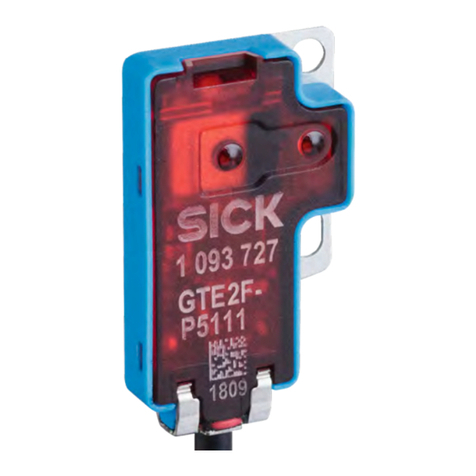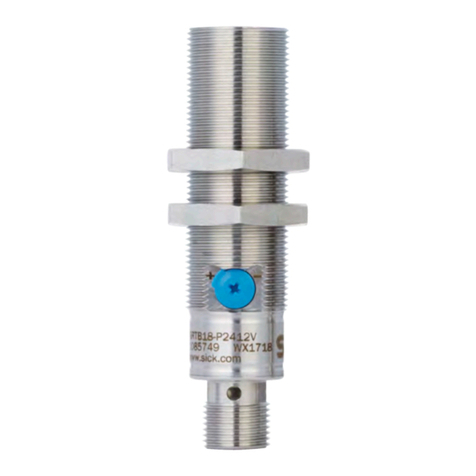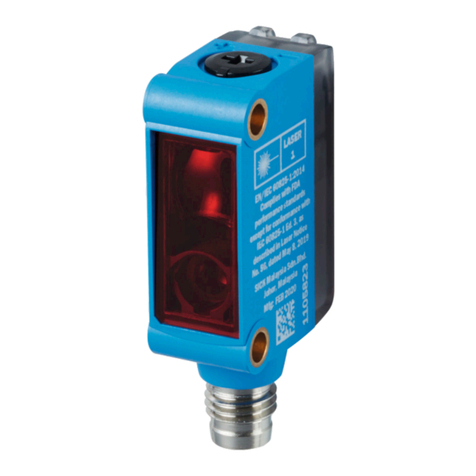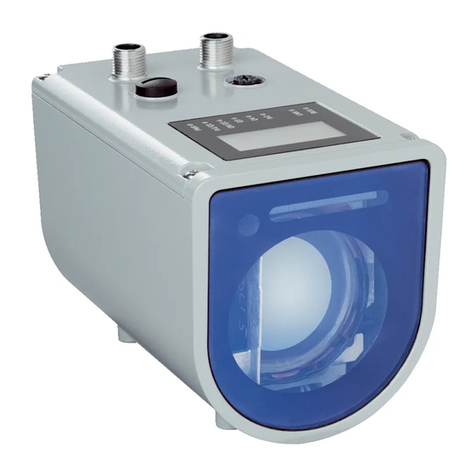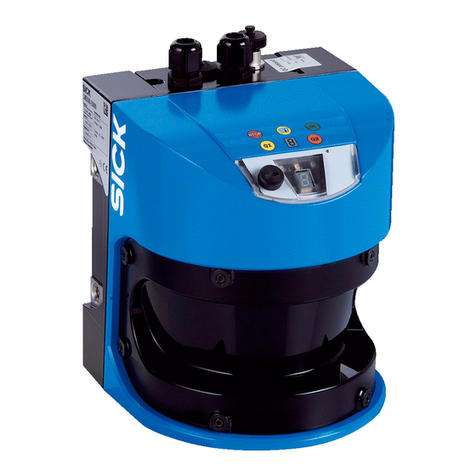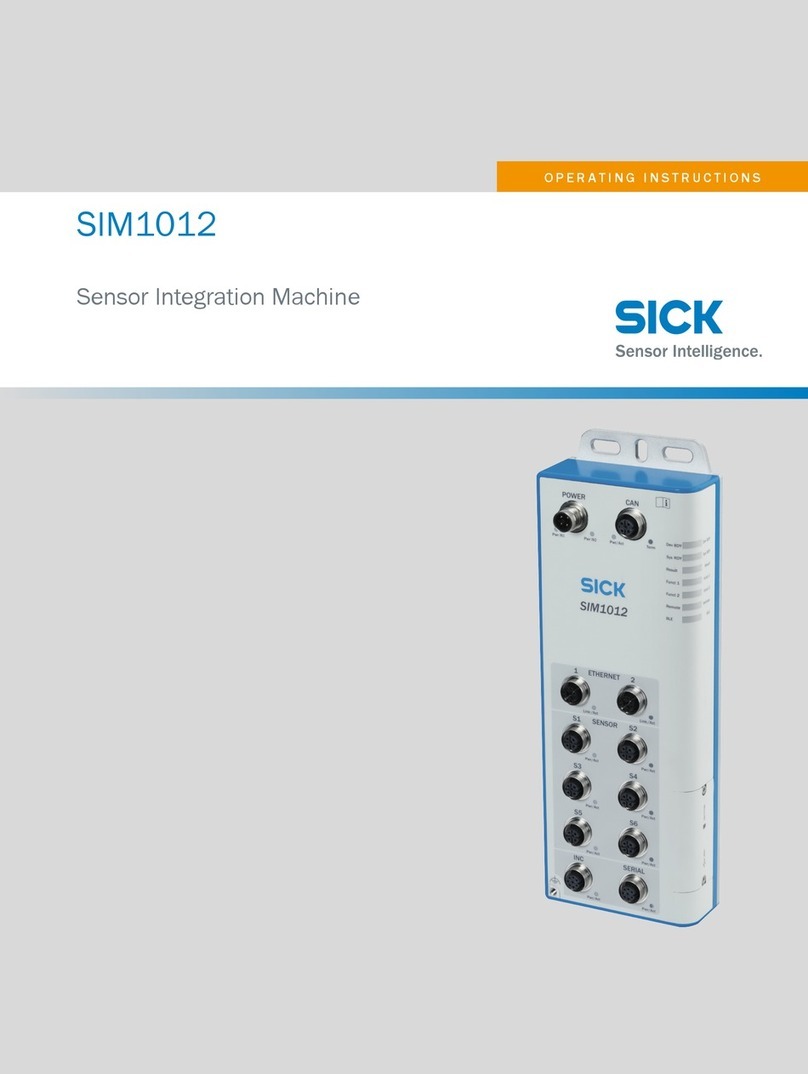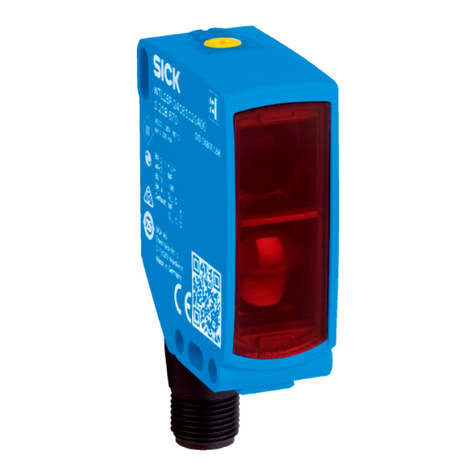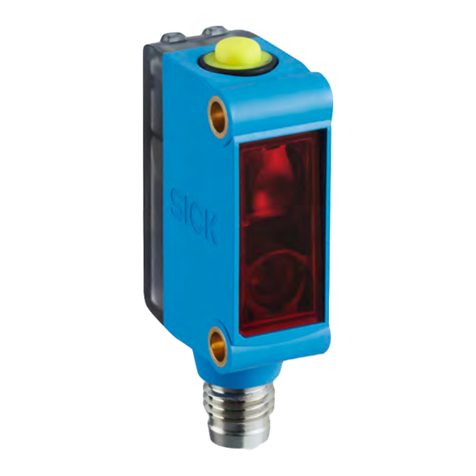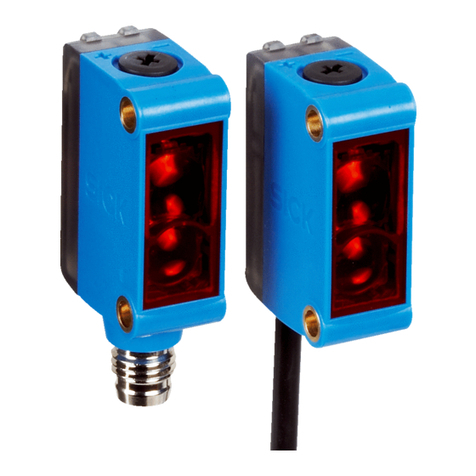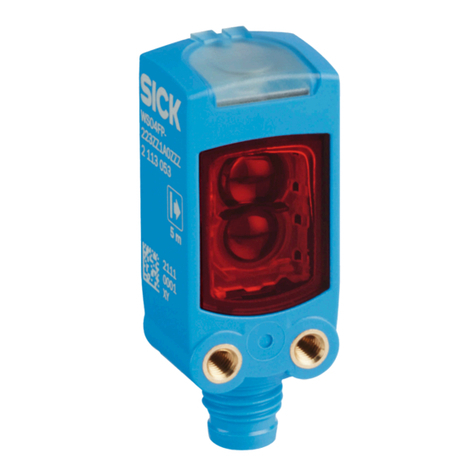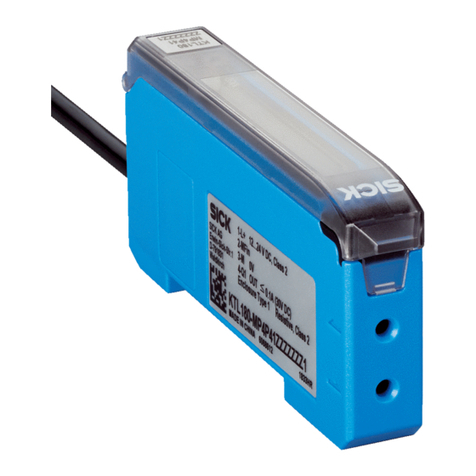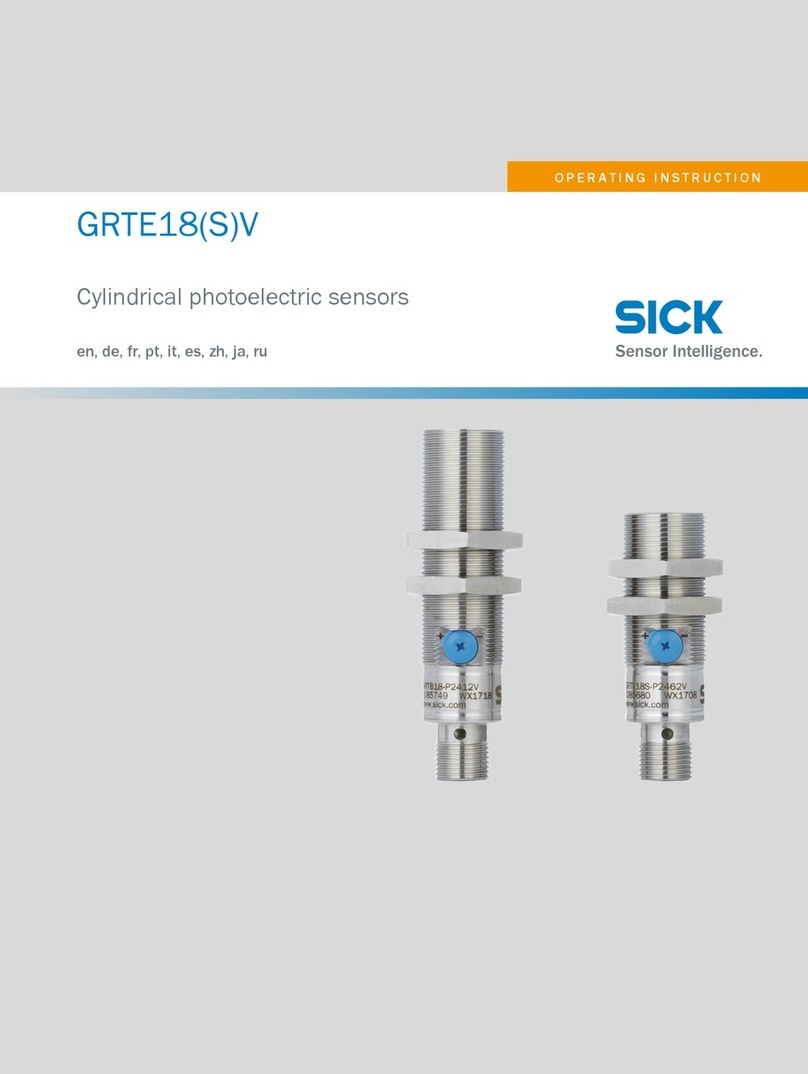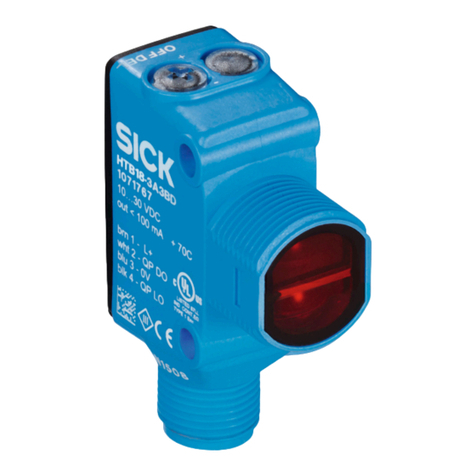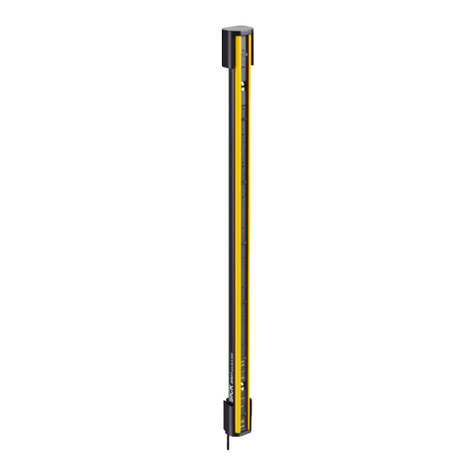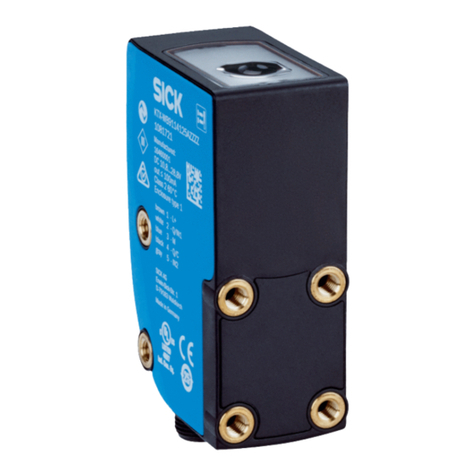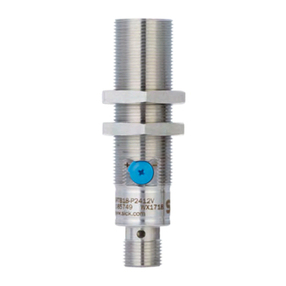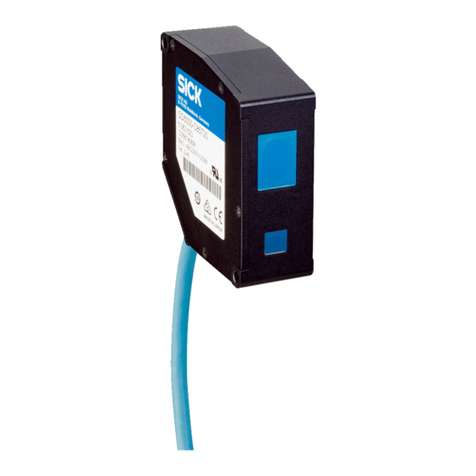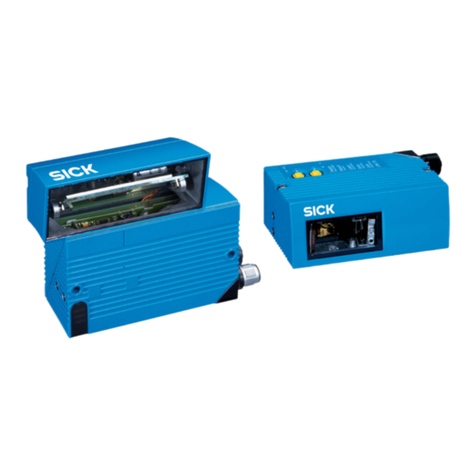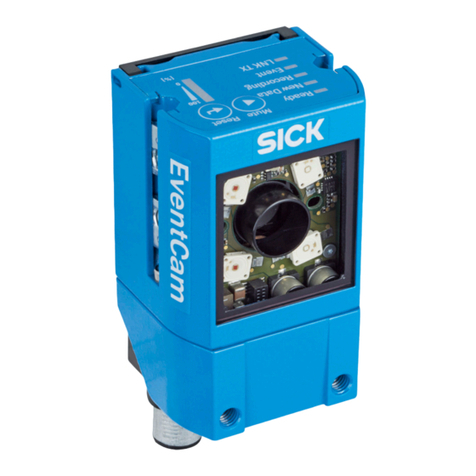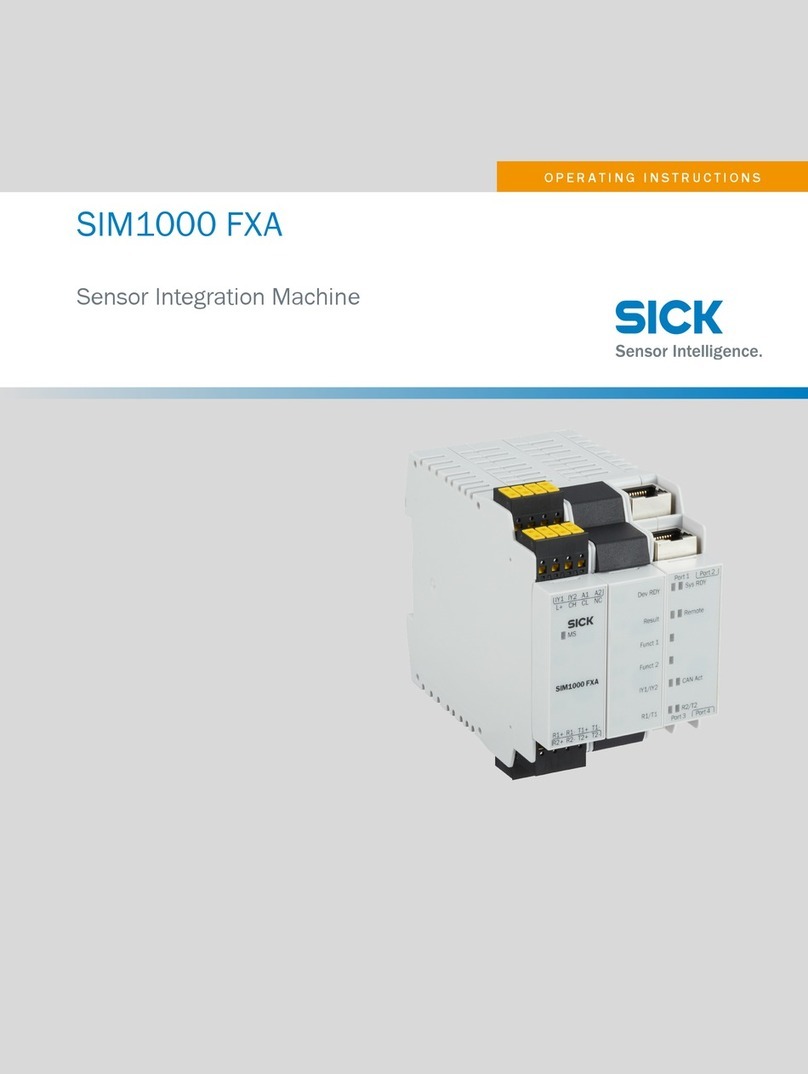
1 General safety notes
■Read the operating instructions before commissioning.
■
Connection, mounting, and configuration may only be performed by trained
specialists.
■
Not a safety component in accordance with the EU Machinery Directive.
■
Do not install the sensor at locations that are exposed to direct UV radiation
(sunlight) or other weather influences, unless this is expressly permitted in the
operating instructions.
■When commissioning, protect the device from moisture and contamination.
■These operating instructions contain information required during the life cycle of
the sensor.
2 Notes on UL approval
The device shall be supplied from an isolating transformer having a secondary overcur‐
rent protective device that complies with UL 248 to be installed in the field rated either:
a) max 5 amps for voltages 0 ~ 20 V (0 ~ 28.3 V peak), or
b) 100 / Vp for voltages of 20 ~ 30 V (28.3 ~ 42.4 V peak).
Alternatively, they can be supplied from a Class 2 power supply.
UL Environmental Rating: Enclosure type 1
3 Product description
3.1 Intended use
The WTB4F is an opto-electronic photoelectric background suppression proximity sen‐
sor (referred to as “sensor” in the following) for the optical, non-contact detection of
objects, animals, and persons. If the product is used for any other purpose or modified
in any way, any warranty claim against SICK AG shall become void.
3.2 Operating elements and status indicators
Photoelectric proximity sensor with background suppression.
Table 1: Operating elements and status indicators
WTB4
Fx-
xxxxxx20Axx xxxxxx30Zxx xxxxxx10Zxx xxxxxxA0Zxx
Teach-Turn adjust‐
ment
Teach-in button Potentiometer Preset default - no
possibility of setting
GENERAL SAFETY NOTES 1
8025299.1BBX / 2021-05-12 | SICK
Subject to change without notice 5

